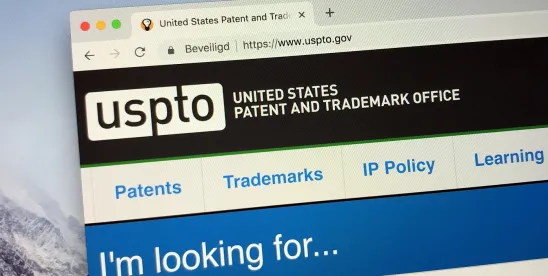On August 4, the Deputy Commissioner of Patents issued a memorandum to Examiners on evaluation of claims in software-implemented inventions for subject matter eligibility under Section 101. While the memorandum does not fundamentally change the USPTO’s guidance published in the MPEP, the memorandum does provide useful clues as to how the USPTO and the Examining Corps will be evaluating claims for subject matter eligibility going forward.
In discussing Step 2A, Prong One of the Alice/Mayo test, the memorandum focuses on the “mental process grouping” of abstract ideas and distinguishing claims that merely involve a judicial exception (and are patent eligible) from claims that recite a judicial exception (which require further analysis). The memorandum reminds Examiners to not expand the mental process grouping to encompass claim limitations that cannot be practically performed in the human mind. Notably, for AI-related innovation, the memorandum explicitly states that “[c]laim limitations that encompass AI in a way that cannot be practically performed in the human mind do not fall within this grouping.”
On the determination of whether claims merely involve or recite a judicial example, the memorandum reminds Examiners of the difference between a recitation of an abstract idea, such as referring specifically to particular mathematical calculations, and a broader claim limitation that can be performed by a variety of mathematical techniques and thus does not recite an abstract idea.
In discussing Step 2A, Prong Two of the Alice/Mayo test, the memorandum focuses significant attention on the notion of technical improvements (which render claims patent eligible), and the overlap between the technical improvements assessment and the “apply it” consideration (which is not sufficient to render a claim patent eligible). The memorandum emphasizes the importance of claiming a particular solution to a problem or a particular manner by which a desired outcome is achieved. Specifically, the memorandum states:
The examiner is reminded to consult the specification to determine whether the disclosed invention improves technology or a technical field, and evaluate the claim to ensure it reflects the disclosed improvement. The specification does not need to explicitly set forth the improvement, but it must describe the invention such that the improvement would be apparent to one of ordinary skill in the art. The claim itself does not need to explicitly recite the improvement described in the specification.
The discussion in the memorandum aligns with common best practices for drafting patent applications related to software implemented inventions, particularly around focusing on the technology and not merely on an outcome. As discussed in our previous blog on Section 101 matters, discussing a technical improvement in the scope of a technical problem remains of paramount importance for patent applications directed to software inventions.
While the memorandum states that the specification need not explicitly set forth an improvement, an explicit discussion of a technical problem, a solution, and the improvement provided by such a solution would be preferable. Doing so would likely avoid any dispute over whether the specification describes a technical improvement embodied in the claims. Such disputes can arise due to the inherent subjectivity in arguing that one of ordinary skill in the art would recognize such an improvement in the absence of an explicit discussion of a technical problem, a solution, and the improvement provided by such a solution.
Further, the memorandum serves as a reminder of the importance of claiming solutions and not outcomes when drafting patent applications. Even though a claim need not explicitly recite an improvement discussed in the specification, the specificity with which a claim recites a particular solution is a significant part of considering whether a claim reflects a technical improvement (and is thus eligible) or an application of an abstract idea (and is insufficient for patent eligibility).
This memorandum may also be beneficial for older applications still pending at the USPTO that may not have been written in an explicit problem/solution framework. The statement that the specification need not explicitly set forth an improvement, so long as the invention is described in a way that would make the improvement apparent to one of ordinary skill in the art, is a powerful statement that practitioners can use in responding to Section 101 rejections based on such applications.
Takeaways
- Particularly in the AI space, a preemptive discussion of how certain claim features cannot, as a practical matter, be performed in the human mind may be a useful tool. This directly follows from the Step 2A, Prong One discussion of “mental processes” in the memorandum.
- In drafting an application, focus on technical problems and technical solutions. It’s better to have that explicitly recited than to resort to the subjective analysis of whether one of ordinary skill would understand that an improvement is described in the specification and embodied in the claims.
- Where an application doesn’t have an explicit recitation of a technical improvement, arguing that one of ordinary skill would recognize the improvement is a viable path forward in prosecution.
- In drafting claims, be wary of claims that are results-oriented. Claims that recite techniques that achieve a result are on much safer ground in the subject matter eligibility analysis than claims that recite just the result.




 />i
/>i

